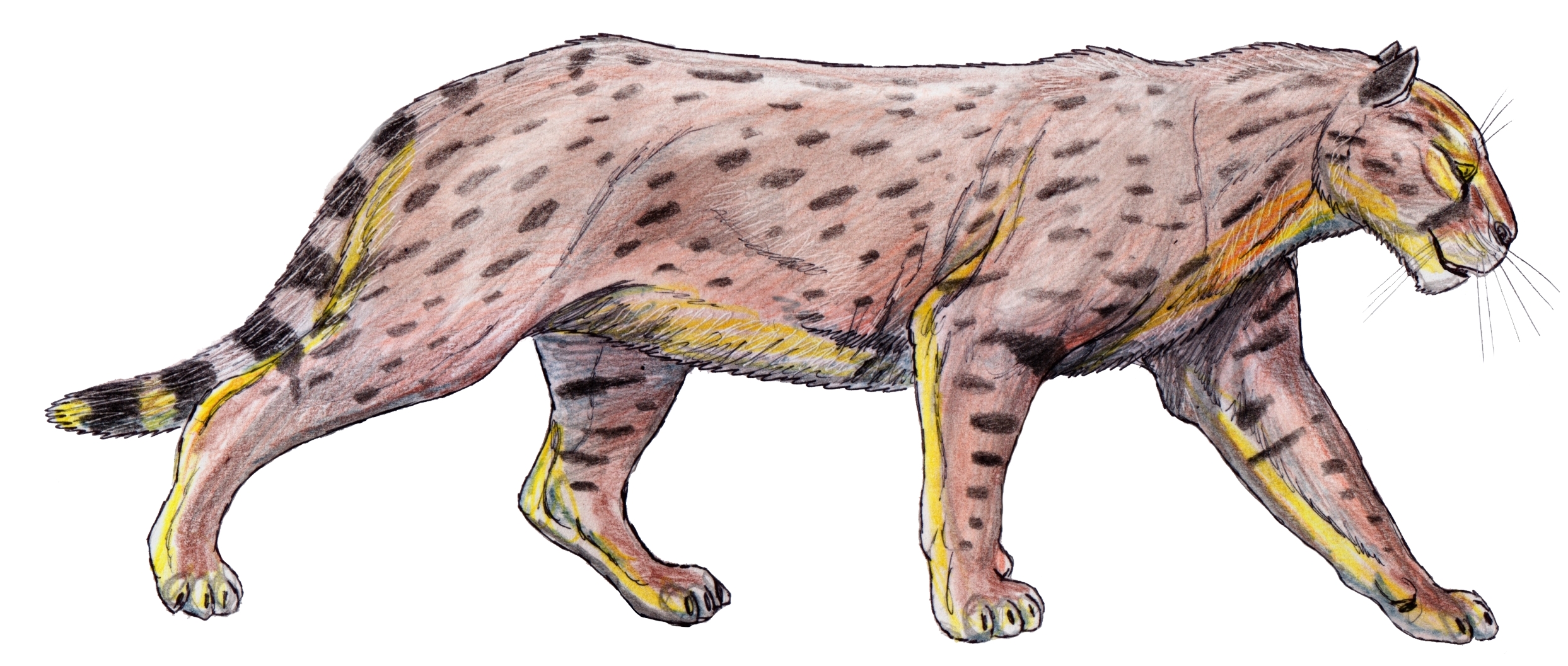|
Stenailurus
''Stenailurus'' is an extinct genus of machairodont saber-toothed cat from the Late Miocene The Late Miocene (also known as Upper Miocene) is a sub-epoch of the Miocene Epoch made up of two stages. The Tortonian and Messinian stages comprise the Late Miocene sub-epoch, which lasted from 11.63 Ma (million years ago) to 5.333 Ma. The ... of Spain. It contains a single species, ''Stenailurus teilhardi ''. External links Metailurini Miocene carnivorans Prehistoric carnivoran genera {{paleo-carnivora-stub ... [...More Info...] [...Related Items...] OR: [Wikipedia] [Google] [Baidu] |
Metailurini
Metailurini is an extinct taxonomic tribe of large saber-toothed cats that lived in Africa, Asia, Europe, and North America from the Miocene to the Pleistocene. The best known Metalurini genera are '' Dinofelis'' and '' Metailurus''. Metailurini had canines longer than neofelids, but smaller than true saber toothed cats. The teeth were also are more conical than flat, so called "scimitar-toothed", having broad and mildly elongated upper canines. Like most extinct cats, the majority of species in Metailurini are known primarily from fragments. However, the systematic position and taxonomy of these creatures is now accepted as being true members of Felidae and descended from '' Proailurus'' and '' Pseudaelurus''. Within Felidae, they had been traditionally considered to belong in Machairodontinae, albeit some have in the past proposed a relationship to Pantherinae,Lars W. van den Hoek Ostende, Michael Morlo, Doris Nagel: ''Fossils explained 52 Majestic killers: the sabre-toothed ... [...More Info...] [...Related Items...] OR: [Wikipedia] [Google] [Baidu] |
Saber-toothed Cat
Machairodontinae is an extinct subfamily of carnivoran mammals of the family Felidae (true cats). They were found in Asia, Africa, North America, South America, and Europe from the Miocene to the Pleistocene, living from about 16 million until about 11,000 years ago. The Machairodontinae contain many of the extinct predators commonly known as "saber-toothed cats", including the famed genus ''Smilodon'', as well as other cats with only minor increases in the size and length of their maxillary canines. The name means "dagger-tooth", from Greek μάχαιρα (''machaira''), sword. Sometimes, other carnivorous mammals with elongated teeth are also called saber-toothed cats, although they do not belong to the felids. Besides the machairodonts, other saber-toothed predators also arose in the Nimravidae, nimravids, Barbourofelidae, barbourofelids, Machaeroidinae, machaeroidines, Hyaenodonta, hyaenodonts and even in two groups of metatherians (the Thylacosmilidae, thylacosmilid Spara ... [...More Info...] [...Related Items...] OR: [Wikipedia] [Google] [Baidu] |
Machairodont
Machairodontinae is an extinct subfamily of carnivoran mammals of the family Felidae (true cats). They were found in Asia, Africa, North America, South America, and Europe from the Miocene to the Pleistocene, living from about 16 million until about 11,000 years ago. The Machairodontinae contain many of the extinct predators commonly known as "saber-toothed cats", including the famed genus '' Smilodon'', as well as other cats with only minor increases in the size and length of their maxillary canines. The name means "dagger-tooth", from Greek μάχαιρα (''machaira''), sword. Sometimes, other carnivorous mammals with elongated teeth are also called saber-toothed cats, although they do not belong to the felids. Besides the machairodonts, other saber-toothed predators also arose in the nimravids, barbourofelids, machaeroidines, hyaenodonts and even in two groups of metatherians (the thylacosmilid sparassodonts and the deltatheroideans). Evolution Family Felidae ... [...More Info...] [...Related Items...] OR: [Wikipedia] [Google] [Baidu] |
Late Miocene
The Late Miocene (also known as Upper Miocene) is a sub-epoch of the Miocene Epoch made up of two stages. The Tortonian and Messinian stages comprise the Late Miocene sub-epoch, which lasted from 11.63 Ma (million years ago) to 5.333 Ma. The evolution of life The gibbons (family Hylobatidae) and orangutans (genus ''Pongo'') are the first groups to split from the line leading to the hominins, including humans, then gorillas (genus ''Gorilla''), and finally, chimpanzees and bonobo The bonobo (; ''Pan paniscus''), also historically called the pygmy chimpanzee and less often the dwarf chimpanzee or gracile chimpanzee, is an endangered great ape and one of the two species making up the genus '' Pan,'' the other being the co ...s (genus '' Pan''). The splitting date between hominin and chimpanzee lineages is placed by some between 4 to 8 million years ago, that is, during the Late Miocene. References External links GeoWhen Database - Late Miocene .03 03 * * ... [...More Info...] [...Related Items...] OR: [Wikipedia] [Google] [Baidu] |
Miocene Carnivorans
The Miocene ( ) is the first geological epoch of the Neogene Period and extends from about (Ma). The Miocene was named by Scottish geologist Charles Lyell; the name comes from the Greek words (', "less") and (', "new") and means "less recent" because it has 18% fewer modern marine invertebrates than the Pliocene has. The Miocene is preceded by the Oligocene and is followed by the Pliocene. As Earth went from the Oligocene through the Miocene and into the Pliocene, the climate slowly cooled towards a series of ice ages. The Miocene boundaries are not marked by a single distinct global event but consist rather of regionally defined boundaries between the warmer Oligocene and the cooler Pliocene Epoch. During the Early Miocene, the Arabian Peninsula collided with Eurasia, severing the connection between the Mediterranean and Indian Ocean, and allowing a faunal interchange to occur between Eurasia and Africa, including the dispersal of proboscideans into Eurasia. During the late ... [...More Info...] [...Related Items...] OR: [Wikipedia] [Google] [Baidu] |



